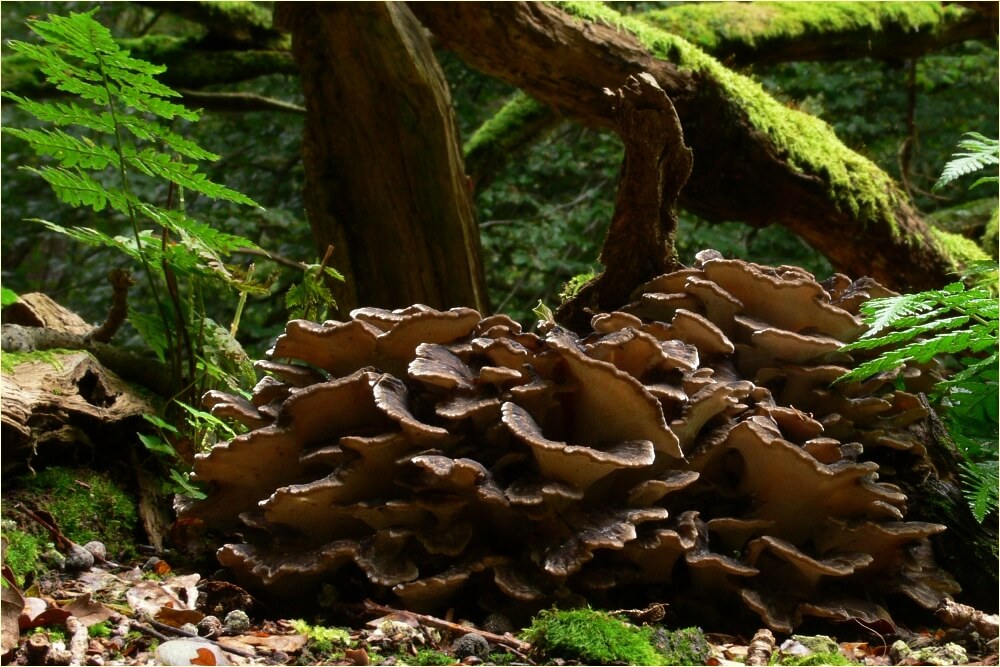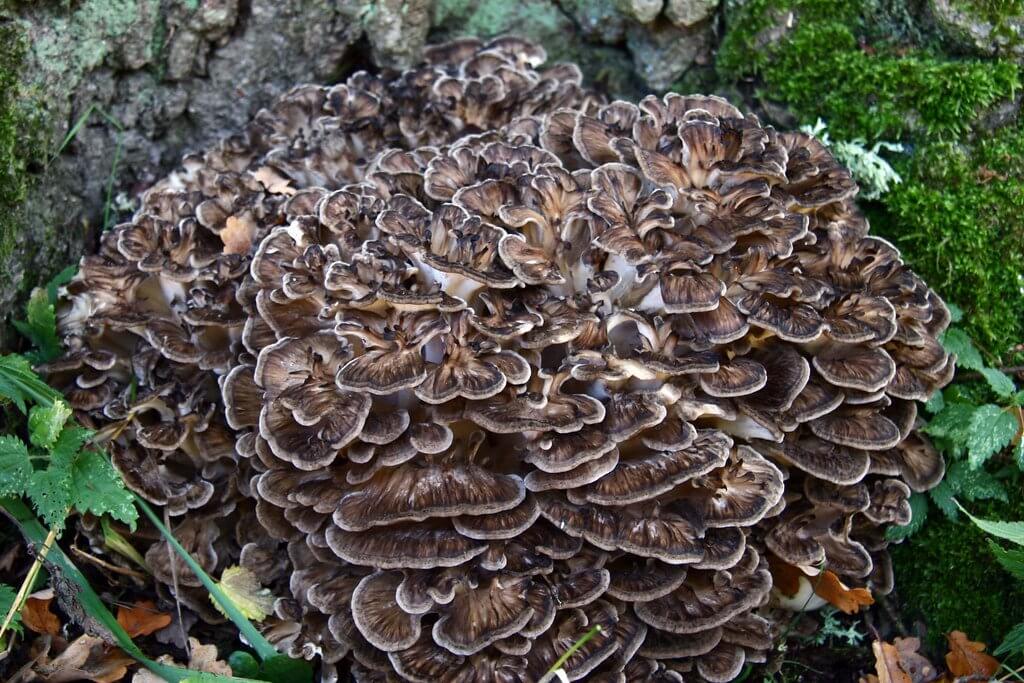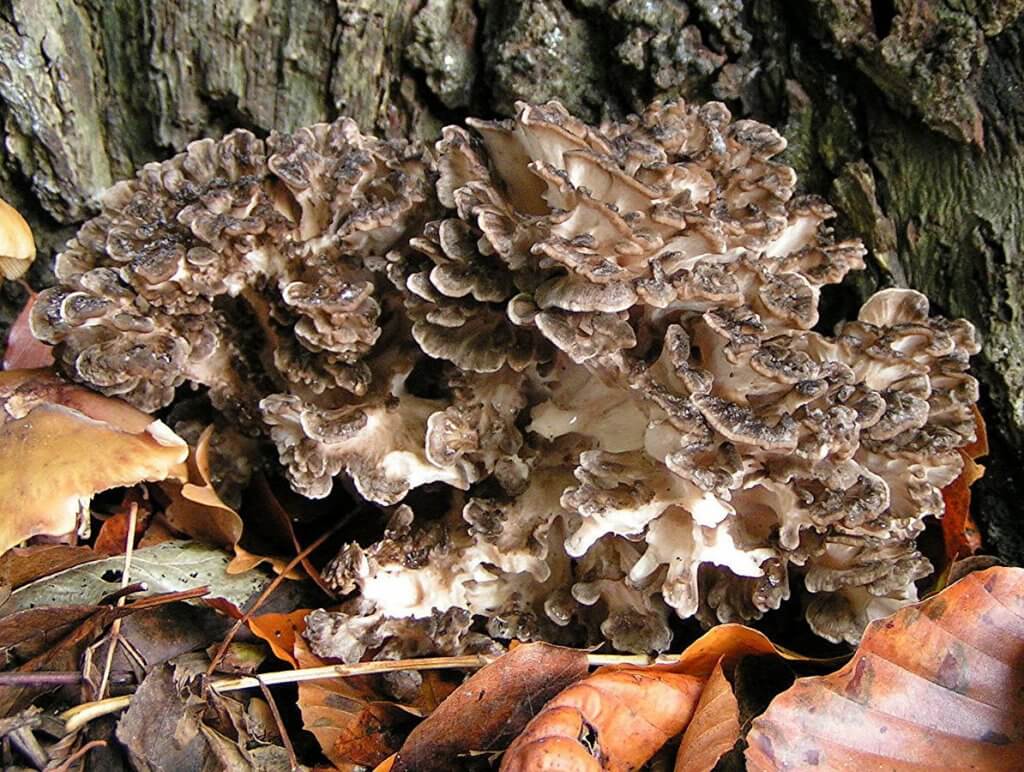
(Photo by: Lebrac/Wikimedia Commons)
Maitake (Grifola frondosa) is a type of mushroom that’s native to China, Japan, and North America. To Westerners, maitake is often called hen of the woods and sheep’s head mushrooms. Despite being a native to North America as well, these mushrooms are more commonly found in Asian supermarkets throughout the US.
The name Maitake itself literally “dancing mushrooms” in Japanese. The mushroom got its name from how Japanese people used to dance whenever they found these mushrooms. These mushrooms are especially prized in the East due to its delicious taste as well as various health and medicinal benefits. In fact, it’s sometimes called “The King of Mushrooms” as well due to its large size and preciousness.
Edibility and culinary use
Chinese and Japanese people have been eating this delicious mushroom for more than 3,000 years. Maitake mushrooms are widely appreciated for their delicate and unique texture as well as their musky, earthy, yet versatile flavor and aroma. Since these mushrooms toughen up as they age, be sure to choose firm, young ones for cooking.
Maitake can be cooked in the same way other popular mushrooms, like shimeji and shiitake, are cooked. Before cooking, make sure to wash them to clean off any dirt that may be sticking to the mushrooms. Once washed, check if the base of the mushrooms is tough or firm. They’re often too tough to be eaten, so you might want to chop them off and discard them.

(Photo by: caspar s/Flickr)
After you have clean mushroom caps, you can cook them any way you want. Stir-fried, deep-fried, baked, or stuffed, these flavorful mushrooms will taste amazing. You can also boil them, then eat the mushrooms and drink the water as an herbal tea. Lastly, you can also eat raw maitake by crumbling or chopping them into small bits and sprinkling them on a salad.
Health benefits
Maitake is said to a type of adaptogen which means it can assist the body in fighting off any mental and physical ailments. This mushroom is also a nutrient powerhouse. It’s rich in beta-glucans, antioxidants, essential amino acids, protein, vitamins B and C, and important minerals, like iron, selenium, copper, zinc, and potassium. Moreover, maitake is also low calorie, fat-free, cholesterol-free, low-sodium, and rich in fiber. So, this delicious mushroom is also a great food for those who are on a diet.
This herbal remedy can be used to cure and prevent a lot of ailments. A hot bowl of maitake soup will be especially good for boosting your immune system and overall health. Consuming maitake will protect you against common illnesses like cold and flu. This mushroom is also consumed to combat high blood pressure, control blood sugar levels, and reduce cholesterol.
Maitake also has strong antiviral properties. This mushroom’s extract has even been shown to kill off HIV and hepatitis virus. It has also been shown to be quite effective in preventing and fighting off tumors and cancer. Additionally, it can also be eaten to reduce the negative effects of chemotherapy such as nausea, hair loss, upset stomach, and loss of appetite. Lastly, this mushroom may also treat infertility caused by Polycystic Ovary Syndrome (PCOS).
Foraging and Cultivation
Maitake is common in the Northeastern US. They can be found growing in the woods at tree bases. They’re most commonly found under oak trees, but they may also grow under maple and elm, so keep an eye out. These mushrooms usually appear from late summer to early fall, but they peak in early to late September. Remember where you find maitake as they usually appear in the same place each year. After harvesting, you can immediately use them or freeze them to store for later use. They can be kept for up to 2 years when frozen.

(Photo by: Pethan/Wikimedia Commons)
If you wish, you can also cultivate maitake on your own. There are many ready-to-grow maitake kits sold online. These growing kits are great for beginners; even children can grow maitake successfully with these kits. Make sure to get your kit from a reliable source. The kits usually come with their own instruction booklets. Pay attention when reading the instructions to ensure optimum growth and yield.
Depending on the type, the maitake kits can be used to grow these mushrooms indoors or outdoors. Most kits are usually made to grow maitake indoors. But after the maitake kit fruits for the first time, you can bury them outdoors in your garden in a moist environment. The fungus will continue to fruit year after year.
Cautions
Consuming maitake may lower your blood sugar level. If you’re diabetic or prone to hypoglycemia, watch your blood sugar levels carefully when consuming this mushroom. It may also lower blood pressure, so avoid consuming it if you have hypotension to prevent worsening your condition. For these reasons, you should also avoid this mushroom two weeks before a scheduled surgery. Lastly, always consult your healthcare provider before consuming maitake as a health supplement.
Conclusion
It’s no wonder that maitake is called the king of mushrooms. With its rich nutrients content and wonderful medicinal benefits, it’s not hard to see why these mushrooms are so treasured. If you’re lucky enough to have them growing near you, forage them and try including them in your daily diet. If you’re not so lucky, don’t worry. Buy some from your local Asian supermarket or try growing them at home by buying ready-to-grow maitake kits.
---------------
Writen by Cornelia Tjandra
Cornelia is a freelance writer with a passion for bringing words to life and sharing useful information with the world. Her educational background in natural science and social issues has given her a broad base to approach various topics with ease. Learn more about her writing services on Upwork.com or contact her directly by email at cornelia.tjandra@gmail.com
Many of our readers find that subscribing to Eat The Planet is the best way to make sure they don't miss any of our valuable information about wild edibles.
See our privacy policy for more information about ads on this site







One Response
I cannot wait to see what mushrooms can offer in the future of medicine. I hope that this magical plant would not be abused and misused. Everything, if used properly and moderately proves to be beneficial.